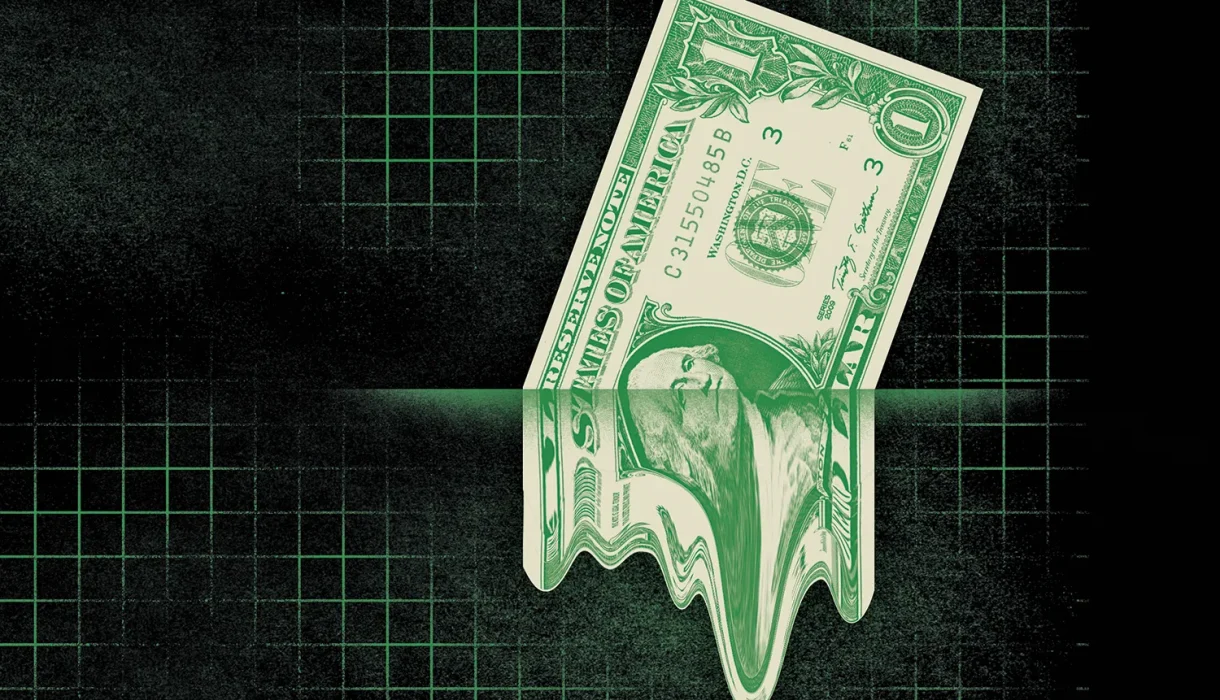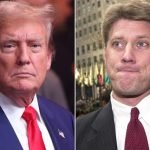
From Bretton Woods to Brinkmanship: The Arc of the American Empire.
Posted in :
The American empire’s dominance was built through financial innovation, gold-backed currency, oil deals, and military might—but mounting debt, inequality, and multipolar realignment are revealing deep cracks in the system.
The sweeping history of the American Empire by tracing how intertwined threads of global finance, military muscle, and shifting alliances shaped today’s world order—and why it all might be unraveling. Drawing from major inflection points, from the Dutch East Indies to the Plaza Accord, we explore how long-running systems of wealth, war, and central banking created both unprecedented prosperity and new vulnerabilities. The piece looks at central banking’s priest-like authority, the US dollar’s transformation from gold standard to fiat king, and examines why current cracks in the empire may signal dramatic change ahead.
If you’ve ever walked into a hotel lobby and imagined the secret decisions shaping history, you’d have envied the diplomats at Bretton Woods in 1944. As a kid, I used to collect foreign coins, puzzling over symbols—some powerful, some forgotten—which, in a way, is the story of empires: here today, gone tomorrow. Let’s follow the curious trail of how America’s grip on global finance, forged in smoky rooms and sealed with gold, might be slipping with every shift in foreign policy or flicker of Wall Street greed. Ready for some uncomfortable truths and history’s hidden corners?
Strange Bedfellows: How Dutch Bankers, British Aristocrats, and American Financiers Cooked Up Modern Empire
The story of the American Empire’s financial dominance begins long before the dollar became the world’s reserve currency. It traces back to the Dutch East Indies Company, the world’s first multinational corporation, which set the blueprint for global trade dominance in the 17th century. This Dutch experiment in capitalism, backed by Calvinist values that encouraged wealth accumulation and prudent investment, created a new model for economic expansion. The Dutch Revolution of 1688, known as the Glorious Revolution, brought these financial innovations to England, forever changing the landscape of global financial systems.
With the founding of the Bank of England in 1694, British aristocrats and financiers took the Dutch playbook and elevated it. The Bank of England was not just a place to store wealth; it became a powerful engine for British imperial ambitions. By turning sovereign debt into a tool for public leverage, the British state could borrow vast sums, fund wars, and expand its reach. As historian Niall Ferguson put it,
‘The Bank of England was not just a bank; it was the lever for an entire empire.’
This new approach to central banking allowed private risk to become public leverage. The British government, now able to borrow from its own citizens and international investors, financed the defeat of Napoleon in 1815 and secured its place as the world’s preeminent power. The Bank of England also cleverly incentivized elites in newly conquered territories, allowing them to deposit their wealth and thus stabilizing British control across the globe.
These early experiments in central banking and global finance did not go unnoticed across the Atlantic. By the early 20th century, American financiers and policymakers looked to both Dutch and British models when creating the Federal Reserve in 1914. The Federal Reserve was designed as a consortium of private banks, coordinating monetary policy to serve both national and international interests. This move marked a major evolution in global financial systems, as the United States began to assert itself as the new center of economic power.
Research shows that the evolution of central banking has played a critical role in shaping geopolitical dynamics. Central banks emerged as tools for global coordination and, at times, control—serving the interests of investors and governments alike. The influence of religious and ethical motivations, especially the Calvinist emphasis on thrift and responsibility, helped shape the early capitalist systems that underpin today’s global financial architecture.
Key milestones in this arc include:
- 1688: The Glorious Revolution ushers in Dutch financial thinking to England.
- 1694: The Bank of England is founded, transforming sovereign debt into imperial power.
- 1815: British financial leverage helps defeat Napoleon, cementing global dominance.
- 1914: The Federal Reserve is established, drawing from both Dutch and British traditions.
Today, the legacy of these strange bedfellows—Dutch bankers, British aristocrats, and American financiers—can be seen in the structure of modern central banking, the dominance of the US dollar, and the ongoing evolution of global financial systems. Their innovations continue to influence the rise and potential decline of the American Empire, as new challenges and shifting alliances test the limits of financial power.
The Dollar’s Disco: Gold, Oil, and the Faith That Keeps the World Spinning
The story of the US Dollar as the world’s global reserve currency is a tale of shifting foundations—first gold, then oil, and now, faith. This journey began in 1944 at the historic Bretton Woods Conference, where delegates from 40 nations gathered in New Hampshire to design a new postwar financial order. The result was a system that anchored the US dollar to gold, promising convertibility at $35 an ounce. This arrangement made the dollar the world’s reserve currency, with gold reserves moving from London to Fort Knox, cementing America’s financial might.
Bretton Woods also gave rise to institutions like the International Monetary Fund (IMF), the World Bank, and the Bank of International Settlements—all underpinned by the US dollar. The new order was clear: the world would trust the dollar because it was as good as gold. For decades, this system provided stability and confidence, but it was not to last.
By 1971, mounting US deficits and the strain of the Vietnam War forced President Richard Nixon to “close the gold window,” ending the dollar’s direct link to gold. The world entered the fiat currency era, where money’s value depended on trust, not tangible assets. As former Federal Reserve Chairman Paul Volcker famously put it:
‘When we went off gold, we went off the rails.’
This shift brought lasting instability and inflation concerns. The dollar was now backed by faith alone, making it vulnerable to manipulation and speculation. Research shows that concerns about fiat currency stability have only grown, with financial crises and inflationary episodes highlighting the risks of a system built on confidence rather than concrete value.
To shore up the dollar’s dominance, the US struck a deal with Saudi Arabia in 1977, birthing the petrodollar system. Oil would be priced exclusively in dollars, ensuring global demand for the currency. This move tied the dollar’s fate to the world’s most vital resource, reinforcing its reserve status even as the gold anchor faded.
The 1980s brought another seismic shift. The Plaza Accord of 1985 saw the US and its allies intervene to weaken the dollar and rebalance global trade. The resulting appreciation of the Japanese yen triggered a massive asset bubble in Japan, followed by decades of stagnation. The Plaza Accord’s impact rippled far beyond its intent, illustrating how monetary manipulations can reshape economies and unsettle financial systems worldwide.
Today, the US dollar remains the backbone of the global financial system, but its foundations are more fragile than ever. The world’s faith in the dollar is tested by rising debt, shifting alliances, and the specter of new financial crises. As the system moves further from tangible anchors like gold or oil, the question of how long this “dollar disco” can keep spinning grows more urgent.
Overstretched and Undone? Debt, Inequality, and the Risky Edges of Empire
The American Empire’s journey from postwar dominance to its current precarious state is a story written in numbers—and in the widening gap between Wall Street and Main Street. In 1980, the US national debt stood at $1 trillion. Fast forward to 2024, and that figure has soared to around $37 trillion. This staggering rise is not just a fiscal statistic; it’s a sign of deeper economic challenges and growing economic inequality that now threaten the very fabric of American power.
The roots of this debt explosion can be traced to the era of financialization that followed the end of the gold standard in 1971. With the US dollar no longer tied to gold, central banks gained new freedom to expand the money supply. Easy money fueled speculative bubbles, most notably the housing bubble that burst in 2008. The 2008 global financial crisis was, as some analysts put it, the “canary in the coal mine”—a warning that the system’s foundations were growing unstable.
The aftermath of 2008 saw unprecedented money printing, bailouts, and a further acceleration of debt. Wall Street rebounded, but the benefits were not equally shared. Economic inequality deepened as financial elites prospered, while middle America faced job losses, stagnant wages, and declining prospects. Much of this pain was linked to the outsourcing of manufacturing to China—a process that began in earnest after the fall of the Berlin Wall and the rise of globalization.
This shift was not accidental. American policymakers encouraged the transfer of manufacturing and technology to China, believing it would secure cheap goods and new markets. Instead, it created a powerful rival and deepened the US’s dependence on foreign production. The US-China relationship became a linchpin of the global economy, but also a source of tension. Trade wars, like those initiated under the Trump administration, exposed the fragility of these ties and risked new economic fault lines.
The consequences of this financial evolution are felt both at home and abroad. Domestically, debt peonage—where households, students, and even cities are trapped by debt—has become a defining feature of American life. Internationally, the US’s reliance on military power to secure the dollar’s dominance has come at a high cost. As research shows, military overextension and the expense of maintaining global bases and interventions have accelerated the empire’s fiscal decline, echoing patterns seen in the fall of past empires like the USSR.
These pressures have also led to shifting alliances and growing instability. As the dollar’s supremacy is questioned and new powers rise, the global financial order faces realignment. The interplay of financial crises, trade wars, and military commitments now defines the risky edges of American influence.
‘Empires rarely fall in a day; they wobble, creak, and falter long before the final act.’ – Graham Allison
Wild Card: Empires, Addiction, and the Casino That Never Closes
Imagine the global financial system as a casino that never shuts its doors. The house—central banking—always wins, or at least, it tries to. Since the days of Bretton Woods, the American Empire has relied on a mix of financial innovation, military might, and geopolitical strategies to keep the game running. But what if, as some suggest, “easy money” is more than just a policy—it’s an addiction? In this analogy, central bankers are the modern pushers, supplying liquidity and credit to keep economies humming, even as risks quietly accumulate.
The metaphor is not new. As historian Adam Tooze puts it,
‘Central bankers are the wizards behind the curtain—just don’t look too closely at the levers.’
Their influence is subtle but profound, shaping everything from interest rates to the very structure of global trade. The American Empire’s dominance, built on the foundation of the US dollar and institutions like the IMF and World Bank, mirrors the cycles of rise and fall seen in ancient civilizations. Research shows that these cycles—marked by hubris, overreach, and eventual correction—are as old as history itself. The Peloponnesian War, chronicled by Thucydides, reminds us that even the mightiest powers are not immune to decline.
Today, the warning signs are hard to ignore. The US national debt has soared to $37 trillion, and the stability of fiat currency is increasingly questioned. The 2008 financial crisis exposed the dangers of unchecked speculation and easy credit, while the Plaza Accord and subsequent Japanese asset bubble serve as cautionary tales about the unintended consequences of financial engineering. The casino’s chips—dollars, yen, euros—are backed not by gold, but by faith, military power, and the promise of future growth.
Geopolitical strategies are now inseparable from financial calculations. Vladimir Putin’s recent moves—challenging US dominance in energy and military spheres, forging new alliances, and exploiting regional conflicts—reflect a broader shift in the global order. The next trigger event could emerge from Iran, Ukraine, or a tense US-China détente. Each scenario has the potential to shake the foundations of the current system, just as past crises have done.
But what does this mean on a personal level? Imagine if your own family budget operated like the American Empire’s—borrowing endlessly, spending beyond your means, and trusting that tomorrow’s income will cover today’s debts. The lesson is clear: eventually, the bill comes due. The recurring cycles of overreach and correction in global finance are not just abstract concepts; they are warnings written in the history of empires.
As the world watches for the next crisis or realignment, one thing remains certain: the casino never truly closes. Central banking will continue to play its shadowy role, orchestrating the flow of money and power. Whether the American Empire can adapt—or whether it will follow the path of its predecessors—remains the ultimate wild card in the game of history.
TL;DR: In short: The rise and potential fall of the American empire was built on financial innovation, central banking power, and military might, but these pillars are showing cracks—heralding major shifts for global power and economic stability.
AmericanEmpire, USDollar, GlobalFinancialSystems, EconomicInequality, CentralBanking, US-ChinaRelations, MilitaryPower, FiatCurrency, FinancialCrises, GlobalReserveCurrency,BrettonWoodslegacy, petrodollarcollapse, USdollarhegemony, centralbankingandempire
#AmericanEmpire, #USDecline, #GlobalTrends, #FiatCurrency, #Geopolitics, #EconomicHistory, #CentralBanking, #FinancialCrises,#BrettonWoods, #AmericanEmpire, #DollarDecline, #FederalReserve, #USDebtCrisis, #GlobalFinance, #IMF, #Petrodollar

